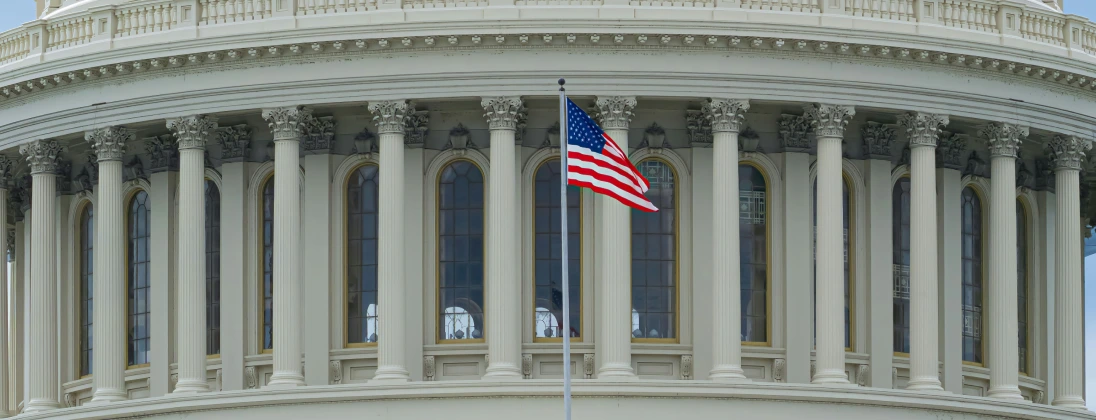
Out of Office: The Price Tag of the Longest U.S. Government Shutdown
The recent six-week US government shutdown, which concluded in mid-November 2025, was the longest in U.S. history. The economic consequences were substantial, and arrived at a time when core growth indicators had already been hinting at underlying weakness in the U.S. economy. The Congressional Budget Office1 (CBO) estimates that the shutdown cut up to 1.5% from Q4 GDP, with the residual impact lingering well into 2026, as some lost economic activity will likely not be recovered.
Context and Scope of the Shutdown
The shutdown began on October 1, 2025, when Congress failed to authorize funds for Fiscal Year 2026, forcing the closure of nonessential government operations and disrupting a wide array of public programs. The direct impact was immediate:
- Over 1.25 million federal employees missed paychecks, resulting in an estimated $16 billion in direct lost wages, as calculated by the Congressional Budget Office, that sharply curtailed consumption for many households.
- The ripple effects extended well beyond direct wage losses, straining the broader economic ecosystem, especially government contractors and the countless small businesses reliant on federal demand.
- Critical safety-net programs, such as SNAP (Supplemental Nutrition Assistance Program), faced interruptions, raising the risk of food insecurity among vulnerable Americans.
- The suspension of federal housing loans and permits led to widespread project delays; some of these disruptions could take multiple quarters to normalize.
Direct Economic Costs and Persistent Losses
CBO estimates the shutdown resulted in about $11 billion in permanently lost economic output. We think the true tally may be higher, though, once all the indirect spillover effects are considered, particularly in sectors most exposed to government spending.
While much lost output is expected to be regained, this $11 billion in permanently forgone output is most acute in industries like travel and retail where lost demand, such as canceled flights or postponed purchases, will be difficult to fully recapture. Additionally, federal contractors and grant recipients may face delayed compensation for months, putting further strain on local economies.
Transmission to Businesses and Households
The shockwaves extended far beyond Washington:
- Airlines and the broader travel sector faced roughly 10,000 disruptions (per aviation analysts). The U.S. Travel Association estimated that the shutdown cost the industry approximately $1 billion per week in lost revenue.
- Consumer-facing businesses and retailers reported softer demand, attributed directly to reduced pay and lower confidence among affected workers. This effect was confirmed by the Congressional Budget Office's analysis of reduced aggregate demand and corroborated by statements from the Retail Industry Leaders Association (RILA).
- Small business lending from government channels stalled. This action not only delayed planned expansions but also likely depressed the recent trend in new business formation, as the Small Business Administration (SBA) confirmed it was unable to process an estimated $5.3 billion in loans for approximately 10,000 small businesses.
Labor Market and Consumer Ripple Effects
Job market effects were more pronounced than in prior shutdowns. Layoffs spread into federal contractor ranks and downstream suppliers. Analysis suggests many affected households postponed major purchases, amplifying the drag on consumption.
Policy and Data Implications
A critical but less publicized consequence was the widespread suspension of federal economic data releases. With agencies offline, investors and policymakers operated in a statistical vacuum, which constrained timely and informed decision-making. This uncertainty may complicate monetary policy in the months ahead.
Impact on Social Programs and State Budgets
Social safety nets experienced abrupt shocks. The temporary interruption of SNAP and other federally funded supports not only hurt recipients but also stressed state budgets as local governments scrambled to cover shortfalls. The aftereffects will persist, particularly if Congress fails to address underlying funding volatility.
Conclusion: The Unrecaptured Tally
The record-long 2025 shutdown delivered an unneeded shock to the U.S. economy. It left behind a wake of $16 billion in delayed wages, severely curtailed consumption, and ultimately stripped 1.5% from Q4 GDP growth. While much of the activity may rebound, the $11 billion in permanently foregone output – the cost of productivity lost forever – underscores that economic stability is not a given; it is the prerequisite for prosperity. This episode serves as a powerful reminder of how quickly political volatility can translate into irreversible financial damage.


Anshul Sharma is Chief Investment Officer at Savvy Wealth, where he oversees the firm’s investment strategy, portfolio design, and platform innovation. He partners across product, marketing, and operations teams to deliver portfolios that take a methodological approach to balance customization with scalability for advisors and their clients. Before joining Savvy, Anshul spent nearly two decades at Bank of America, where he managed the Chief Investment Office’s Sustainable Model Portfolio Suite, launched new proprietary offerings, and, as Head of Alternative Investment Strategy, provided guidance and thought leadership to advisors around hedge fund, private market, and real asset strategies. He began his career as an Investment Strategist at U.S. Trust, designing multi-asset portfolios for high-net-worth and institutional clients. Anshul holds a Master of Financial Engineering from UC Berkeley and a Bachelor of Computer Engineering from Lehigh University. Outside of work, he is an avid tennis player, enjoys time with his wife, two sons, and their Bernedoodle, and is an auto enthusiast who loves cooking and travel.

Material prepared herein has been created for informational purposes only and should not be considered investment advice or a recommendation. Information was obtained from sources believed to be reliable but was not verified for accuracy.
Savvy Wealth Inc. is a technology company. Savvy Advisors, Inc. is an SEC registered investment advisor. For purposes of this article, Savvy Wealth and Savvy Advisors together are referred to as “Savvy”. All advisory services are offered through Savvy Advisors, while technology is offered through Savvy Wealth. The views and opinions expressed herein are those of the speakers and authors, and do not necessarily reflect the views or positions of Savvy Advisors.
1 Congressional Budget Office, A Quantitative Analysis of the Effects of the Government Shutdown on the Economy Under Three Scenarios, as of October 29, 2025






